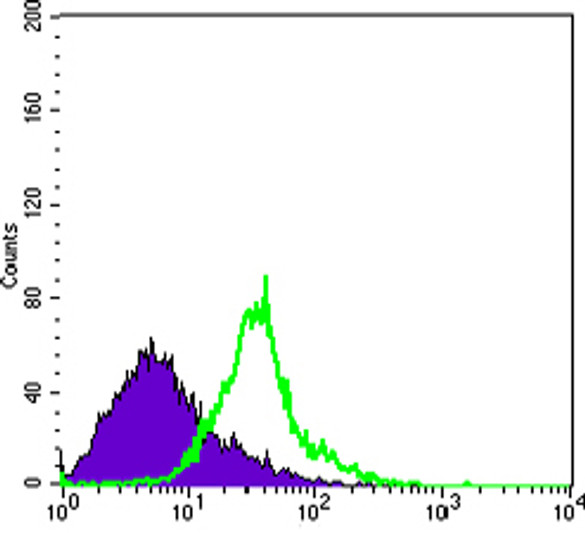| Host: | Mouse |
| Applications: | WB/IHC/IF/FC/ELISA |
| Reactivity: | Human/Mouse |
| Note: | STRICTLY FOR FURTHER SCIENTIFIC RESEARCH USE ONLY (RUO). MUST NOT TO BE USED IN DIAGNOSTIC OR THERAPEUTIC APPLICATIONS. |
| Short Description : | Mouse monoclonal antibody anti-Proto-oncogene Wnt-1 is suitable for use in Western Blot, Immunohistochemistry, Immunofluorescence, Flow Cytometry and ELISA research applications. |
| Clonality : | Monoclonal |
| Clone ID : | 10C8 |
| Conjugation: | Unconjugated |
| Isotype: | IgG1 |
| Formulation: | Liquid in PBS containing 0.03% Sodium Azide, 0.5% BSA, 50% Glycerol. |
| Purification: | Affinity purification |
| Dilution Range: | WB 1:500-1:2000IHC 1:200-1:1000IF 1:200-1:1000FC 1:200-1:400ELISA 1:10000 |
| Storage Instruction: | Store at-20°C for up to 1 year from the date of receipt, and avoid repeat freeze-thaw cycles. |
| Gene Symbol: | WNT1 |
| Gene ID: | 7471 |
| Uniprot ID: | WNT1_HUMAN |
| Specificity: | Wnt-1 Monoclonal Antibody detects endogenous levels of Wnt-1 protein. |
| Immunogen: | Purified recombinant fragment of Wnt-1 expressed in E. Coli. |
| Function | Ligand for members of the frizzled family of seven transmembrane receptors (Probable). Acts in the canonical Wnt signaling pathway by promoting beta-catenin-dependent transcriptional activation. In some developmental processes, is also a ligand for the coreceptor RYK, thus triggering Wnt signaling. Plays an essential role in the development of the embryonic brain and central nervous system (CNS). Has a role in osteoblast function, bone development and bone homeostasis. |
| Protein Name | Proto-Oncogene Wnt-1Proto-Oncogene Int-1 Homolog |
| Database Links | Reactome: R-HSA-201681Reactome: R-HSA-3238698Reactome: R-HSA-373080Reactome: R-HSA-381340Reactome: R-HSA-4086400Reactome: R-HSA-4641262 |
| Cellular Localisation | SecretedExtracellular SpaceExtracellular Matrix |
| Alternative Antibody Names | Anti-Proto-Oncogene Wnt-1 antibodyAnti-Proto-Oncogene Int-1 Homolog antibodyAnti-WNT1 antibodyAnti-INT1 antibody |
Information sourced from Uniprot.org












